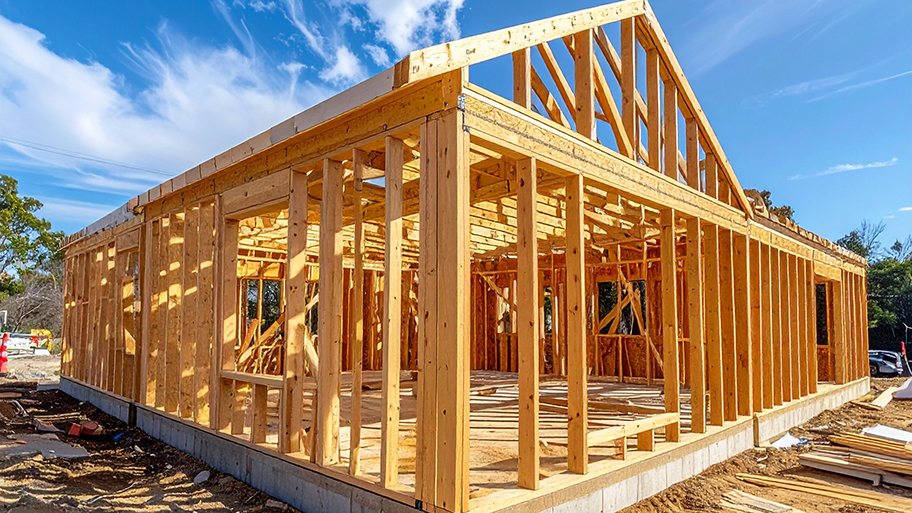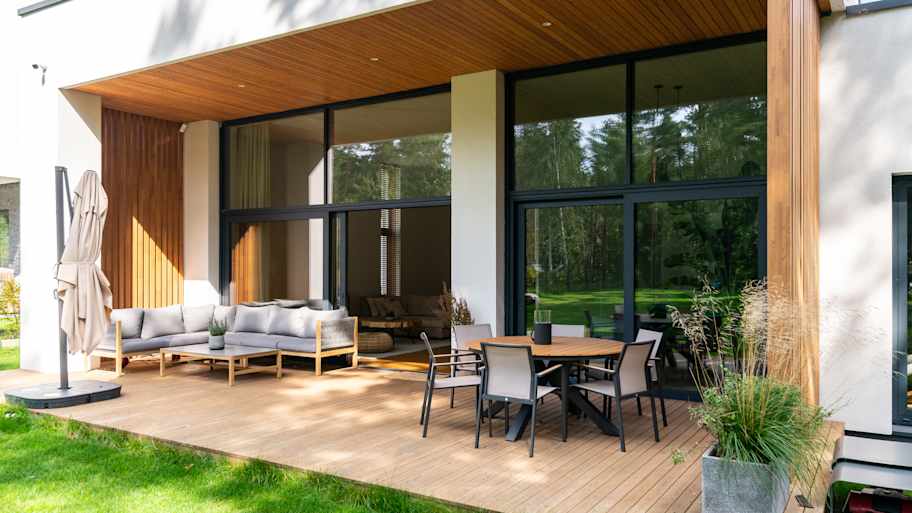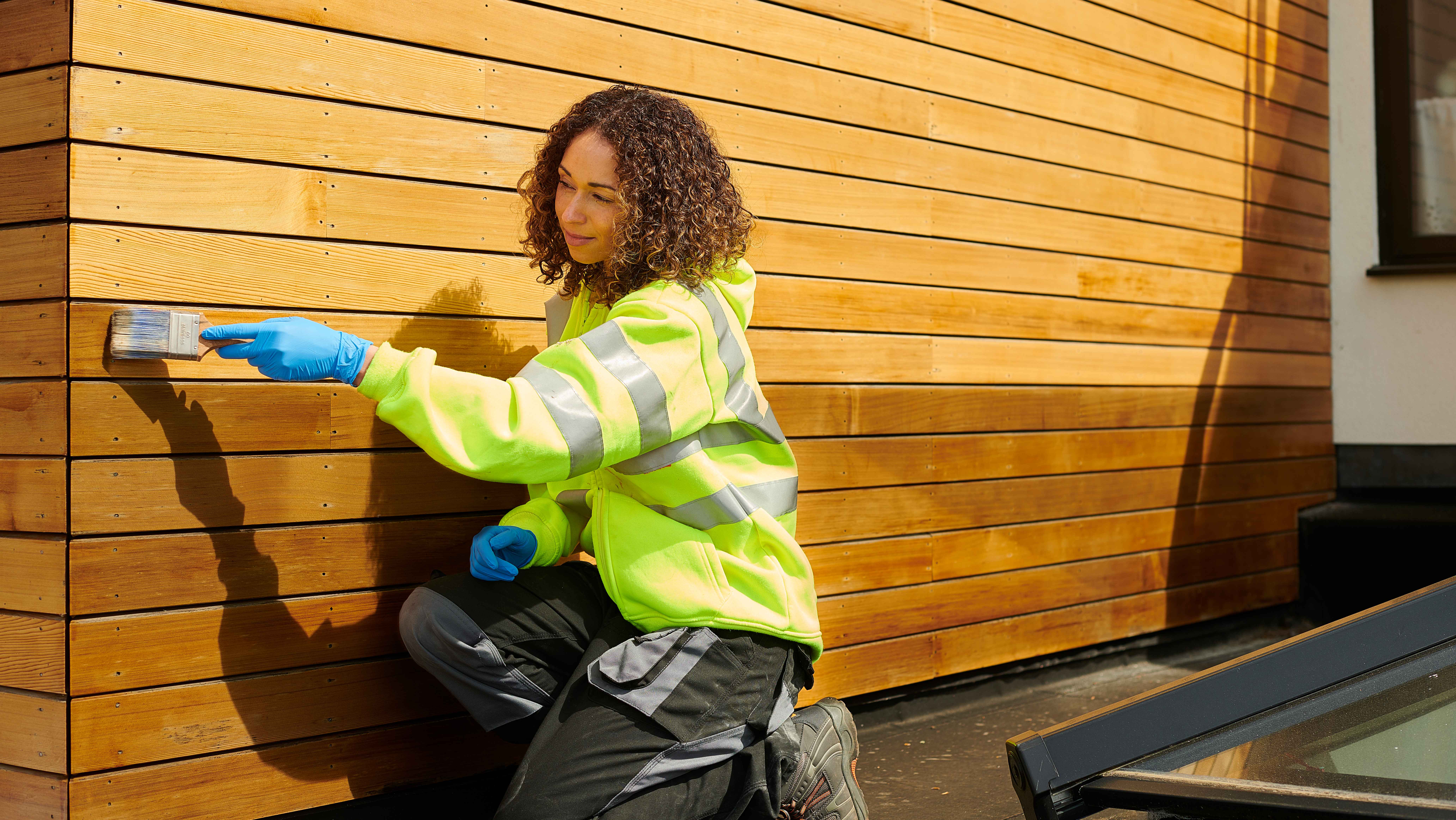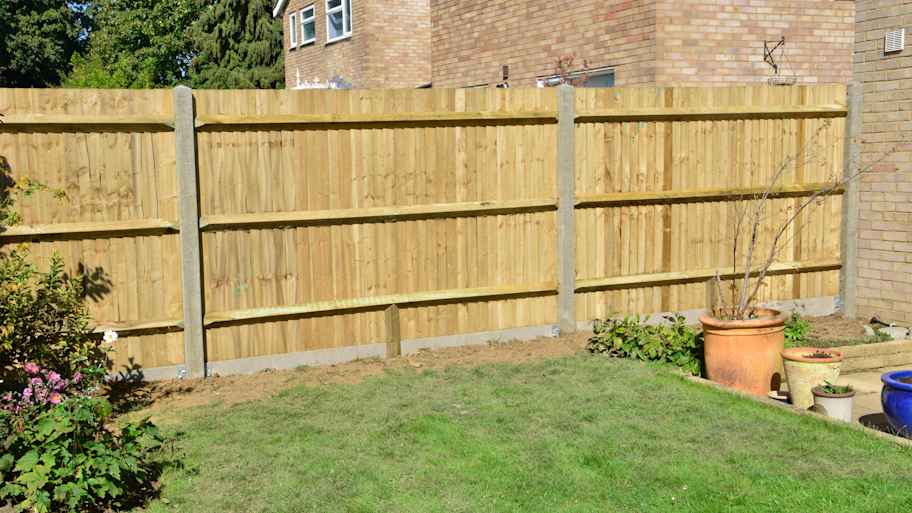
The cost to frame a house can vary depending on the size of your home, the structure you’re building, and your materials. Keep reading to learn how much framing your house might cost.
Spoiler alert: The best choice is the one that fits your needs


Pressure-treated wood costs $2 to $5 per square foot.
Cedar wood is pricier, running between $3 and $7 per square foot.
While cedar costs more at the outset, it has a higher selling appeal and looks better overall.
The best choice depends on how and where you'll use it, your budget, and how much maintenance you're willing to perform.
Cedar wood and pressure-treated wood provide similar benefits, such as pest and rot resistance, and both are excellent choices for outdoor projects like fencing and decking. However, they each have particular strengths and weaknesses. Choosing between cedar versus pressure-treated wood means evaluating your short and long-term needs for the project.
Cedar wood is considered more attractive, is more predictable as a building material, and has a better return on investment (ROI). On the other hand, pressure-treated wood lasts longer when in contact with the ground, is the more durable option, and requires less maintenance over its lifespan. Finally, cedar wood is more expensive than pressure-treated wood.

Cedar wood comes from cedar trees. The material is naturally rot and pest resistant and has a lifespan of between 15 and 30 years. However, its lifespan can be significantly longer with excellent maintenance. Homeowners and experts like cedar for its natural beauty and its acceptance of various stains and finishes, which can enhance its appearance even further.
| Pros | Cons |
|---|---|
| Naturally beautiful appearance | Higher cost |
| Less susceptible to warping or shrinking | Requires frequent maintenance for appearance and longevity |
| Readily accepts finishes | Softer and less durable than pressure-treated wood |
Best for:
Applications where appearance is essential
Siding applications in which pressure-treated lumber is inappropriate
Installations that can dry out regularly and aren't in contact with the ground
Cedar wood, by its nature, has a tight wood grain, attractive knots and imperfections, and a range of colors from deep reds to almost white. Homeowners appreciate its naturally good looks, which also give the material the added benefit of carrying a high resale value in most applications.
Because of cedar's tight grain and lack of wet additives, the material is predictable and won't shrink or warp as much as treated lumber varieties. These attributes make it an excellent choice for a home siding investment. Additionally, cedar accepts virtually all types of wood finishes, from clear sealers to stains, and even paint.
Cost is the primary drawback to installing cedar lumber. The cost of a cedar fence, for example, is high compared to pressure-treated and even some composite material versions in similar styles. Additionally, because cedar turns gray over time, maintenance, including frequent staining or sealing, is necessary if you wish to keep it looking new.
While cedar's natural resistances provide the material with a long lifespan, it's a softer wood and will show blemishes more readily than other materials, making it a less durable option for high-traffic applications, such as decking.

Pressure-treated wood comes from pine or fir trees and undergoes a process of infusing the raw material with chemical additives while under high atmospheric pressure. The treatment helps protect the wood from rot and pests and provides a lifespan similar to that of cedar.
Like cedar, pressure-treated lumber can also have a longer lifespan with proper maintenance. However, it comes in varying grades and can be less predictable in terms of warping or shrinking over time.
| Pros | Cons |
|---|---|
| Cost-effective | Can warp or shrink when drying out |
| Durable and long-lasting | Not as attractive as cedar |
| Modern versions are safe | Doesn't accept stains or paints when new |
Best for:
Installations where cost and durability are essential
Applications that are in contact with the ground
Support structures that could use cedar as the finishing material
The most significant pro regarding pressure-treated wood is its cost-effectiveness. While the material costs less than cedar on a one-for-one basis, it's also more durable and appropriate for use in high-traffic applications. The lifespan of pressure-treated wood is also impressive, reaching up to 40 years with proper maintenance.
While pressure-treated lumber used to contain unsafe additives, such as arsenic, modern versions do not warrant any health concerns.
Because pressure-treated lumber requires liquid chemical injections to give it its pest and rot resistance attributes, the product comes to you heavy and wet. As the material dries out, it can warp and shrink in unpredictable ways, which can affect appearance and even safety in rare circumstances.
Additionally, the wet treatment makes it difficult or impossible to stain or paint when the product is new. While modern pressure-treated wood can have color enhancements with browns, tans, or greens, its appearance doesn't stand up against cedar's naturally good looks.
Choosing whether to use cedar or pressure-treated wood can depend on several factors. However, most homeowners base the decision on just a few attributes. Furthermore, your project can incorporate both types, as pressure-treated lumber is excellent for use as support for decks and fencing that feature cedar as the finishing material.
Cedar is the hands-down winner when it comes to appearance. Cedar is available in natural colors from deep browns and reds to pale tans and whites. The tight wood grain and dark imperfections enhance its beauty. Additionally, cedar readily accepts all kinds of finishes to help achieve a deep, rich look. While pressure-treated lumber techniques are getting better and more attractive, they still pale in comparison to cedar's excellent aesthetic attributes.
Cedar is a softwood that readily shows blemishes and scars. This fact means that, while attractive, it's not the most durable choice for high-traffic locations, such as decking, compared to pressure-treated wood.
While both cedar and pressure-treated lumber can experience rot, especially when water saturation is involved, they're both long-lasting. However, treated wood can have a longer lifespan with less maintenance involvement, and performs better when in contact with the ground or cement footings.
Left without any maintenance and in relatively dry conditions, cedar will often outlast pressure-treated wood. However, if moisture is present, the opposite can be true, but it will depend on the quality of the lumber. Expect both cedar and pressure-treated wood to last between 15 and 30 years on average, and longer with excellent maintenance.
Prices for both materials vary significantly by location, demand, and availability. However, the average cost of cedar is between $3 and $7 per square foot, while pressure-treated wood costs between $2 and $5 per square foot, making pressure-treated wood the clear winner, based on cost alone.
In most situations, such as fences, siding, and decorative exterior components, cedar carries a higher ROI than pressure-treated wood. Cedar also offers more selling appeal as a more attractive material. However, in the case of deck construction ROI, durability and ease of maintenance attributes give pressure-treated versions the edge.
Discussing the features and pros and cons of cedar versus pressure-treated wood with your local contractor can provide further insight into which material is best for your situation, including your financial return potential.
From average costs to expert advice, get all the answers you need to get your job done.

The cost to frame a house can vary depending on the size of your home, the structure you’re building, and your materials. Keep reading to learn how much framing your house might cost.

Building permits are essential. Here’s everything you need to know about building permit costs to budget accordingly for your building project.

When your home project requires a professional at the helm, how much are construction management fees, and how do they determine their rate? Let's break it down.

Learn what’s possible and what your options might be when considering ways of raising the ceiling height in a room or your entire house.

Freezing temperatures can cause damage to your garage, vehicles, and other items. Learn how to winterize your garage to prevent costly repairs.

Discover why your silicone caulk is not drying and learn effective solutions to fix the issue. Ensure a flawless finish for all your sealing projects.